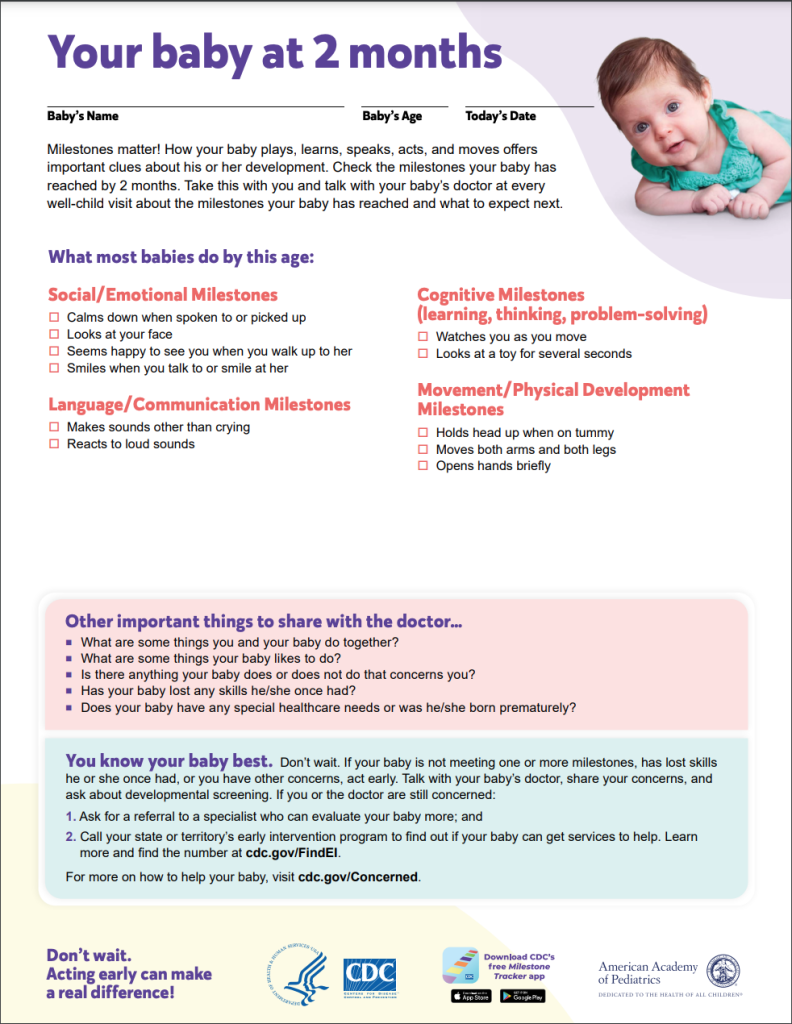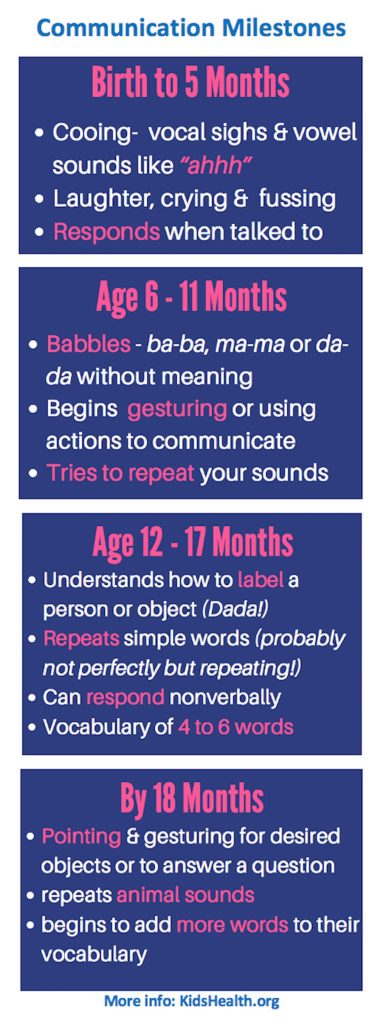Baby Milestones: Updated
Last week, the CDC and the American Academy of Pediatrics, (AAP) revised developmental milestones for children age 2 months to 5 years. The purpose of the updates is to help parents identify autism and developmental delays in their children, so that helpful interventions may occur earlier. Early intervention is a key factor in allowing children to reach their full potential. Baby Milestones: Updated details how milestone evaluation has changed since 2004.
Parents can use the milestone checklists to keep track of their infant, toddler and child’s development.
Baby Milestones
The Milestone Moments checklist developmental milestones from ages 2 months to 5 years. The CDC’s free App, Milestone Tracker is also available. This may be especially helpful to parents of twins or children of different ages.

Clearer Language and Narrower Age Ranges
According to the AAP, the revised developmental milestones “identify the behaviors that 75% or more of children can be expected to exhibit at a certain age…”. In the past, milestones contained vague language such as, “At this age baby may…” or “this behavior begins between 12 -17 months…” The updated guidance now includes specific checklists for ages 15 and 30 months to bridge any gaps between the previously longer ranges.
Development as a Continuing Discussion Between Families and Primary Care Providers
The new guidance is clear to say that parents know their children best and should not wait to contact a doctor with concerns. Further, that early childhood development should be an ongoing conversation between parents and doctors. To facilitate this conversation, the new guidelines contain a specific checklist for each well-child visit ( 2 months, 4 months, 6 months etc.) rather than checklists by age range.
Doctors and clinicians will also ask open-ended questions such as Is there anything your child does that concerns you? This will also encourage child development as a discussion.
Baby Milestones: Updated – Ongoing Resources and Tips for Parents to Use at Each Age
Expanded, appropriate tips parents can incorporate into developmental learning are now available. For example: Use “back and forth” play with your baby. When your baby smiles, you smile; when he makes sounds, you copy them. This helps them learn to be social.

Categories
- Corporate Care & Partners
- COVID19 Archive
- En Espanol
- Expert Guides
- Hiring a Night Nanny
- Infant Safety
- Infant Sleep Hub
- Newborn Care
- Postpartum Health
- Twins & Multiples
- Work as a Night Doula
- zPost Archives
